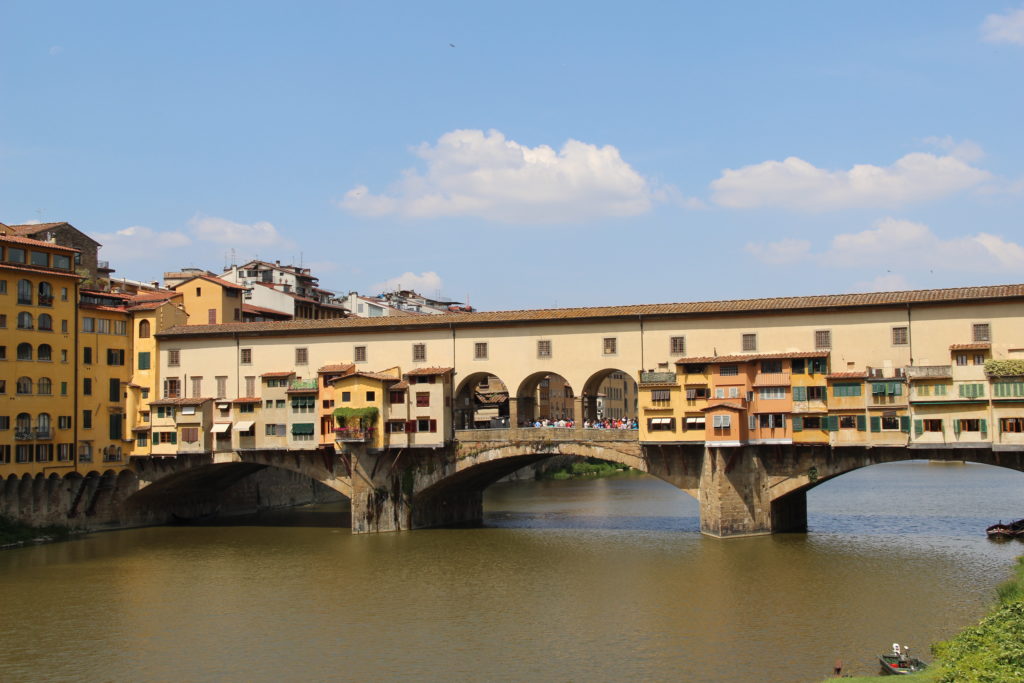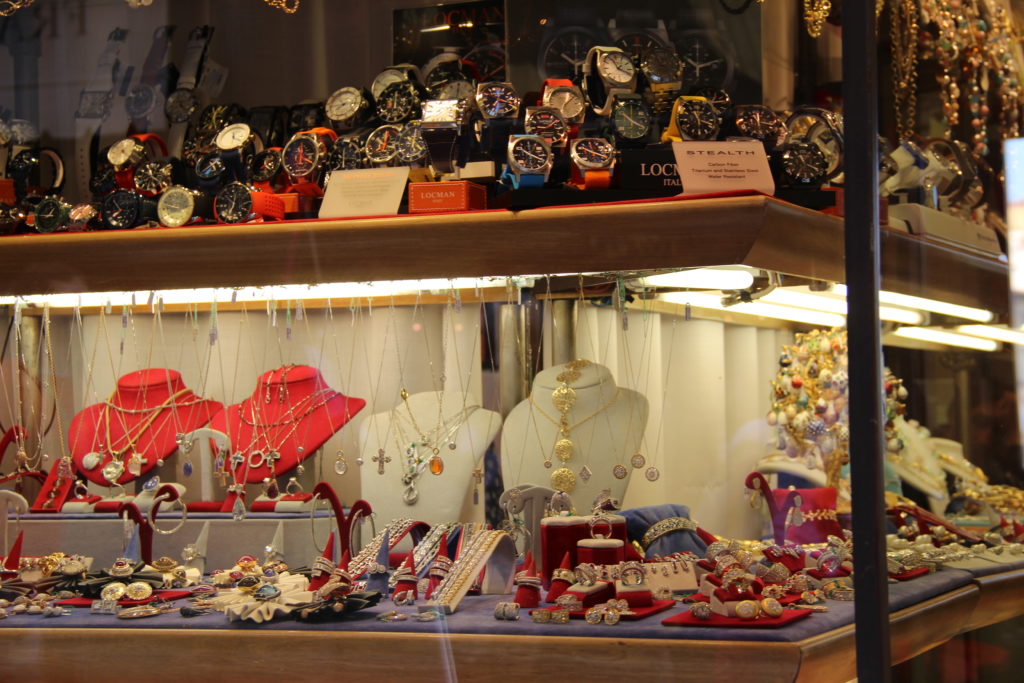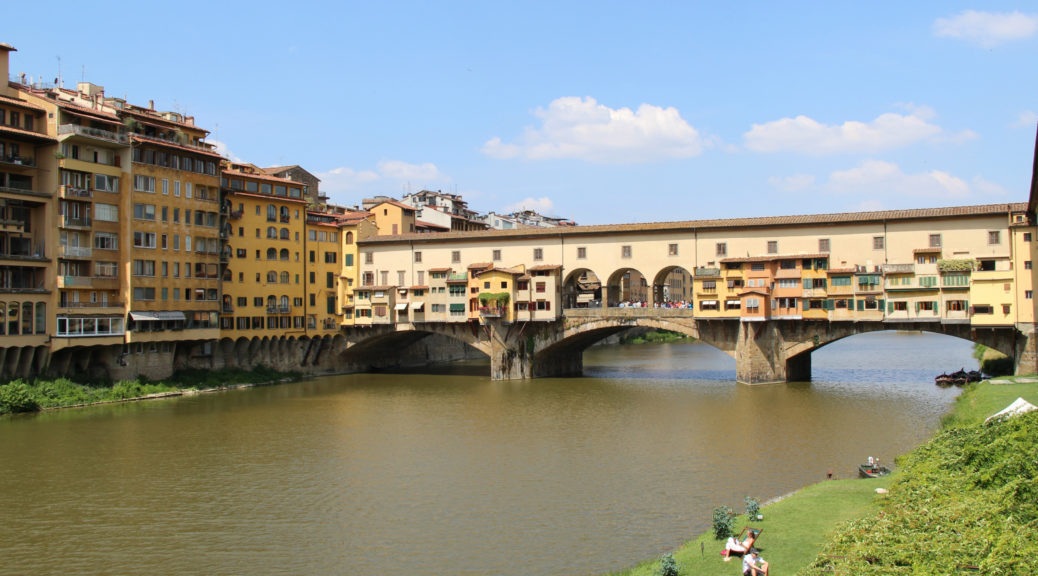
Florence (Part One)
Florence is an incredible city and was our favorite on the Classic Italy tour. It is an easy city to get around. And despite never having an interest in art history, I developed an appreciation for it while visiting this lovely city. And then there was the food. Florence is said to have the world’s best gelato. I had to sample it (on a few occasions) and would heartily agree! There are also small restaurants with incredible food. We had dinner at one of these restaurants, Ristorante “II Profeta” – in fact, we enjoyed it so much we went back and had dinner a second night. The owner was a charming host. My husband is pictured with him below. Italy also has great caprese salads. One we enjoyed at our hotel is also pictured.
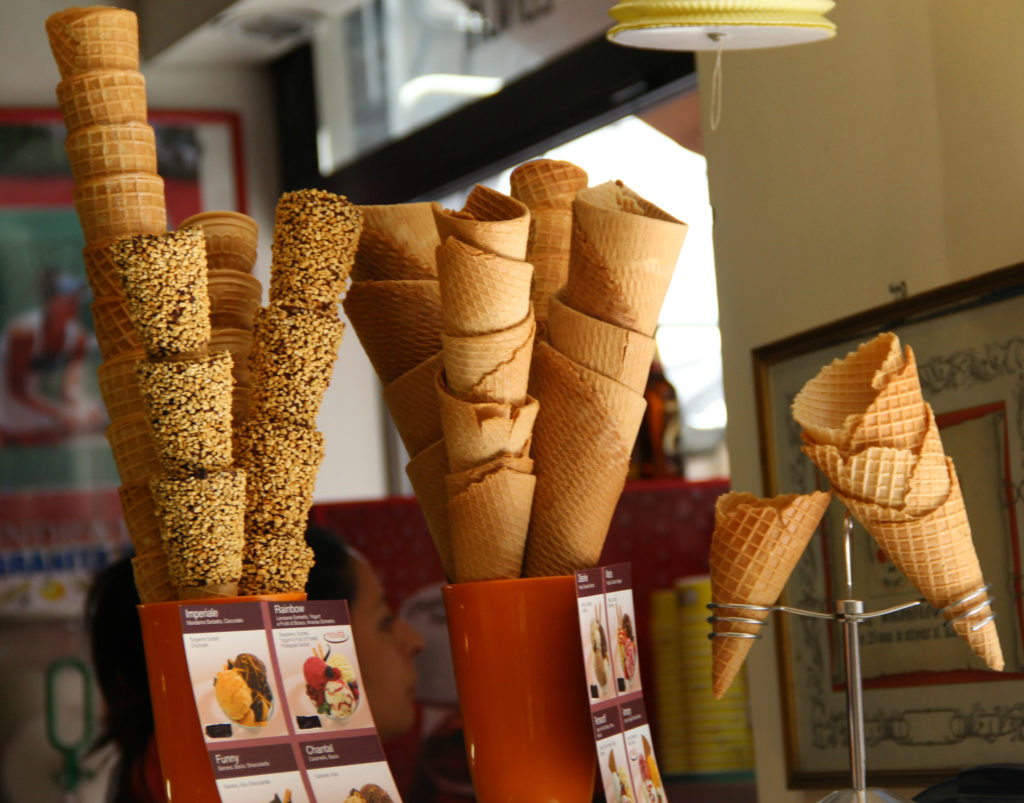



Before I talk about the history, I want to share that Ferrari’s 2013 Cavalcade also occurred during our visit. Some of the participating cars were displayed just outside the front door of our hotel.
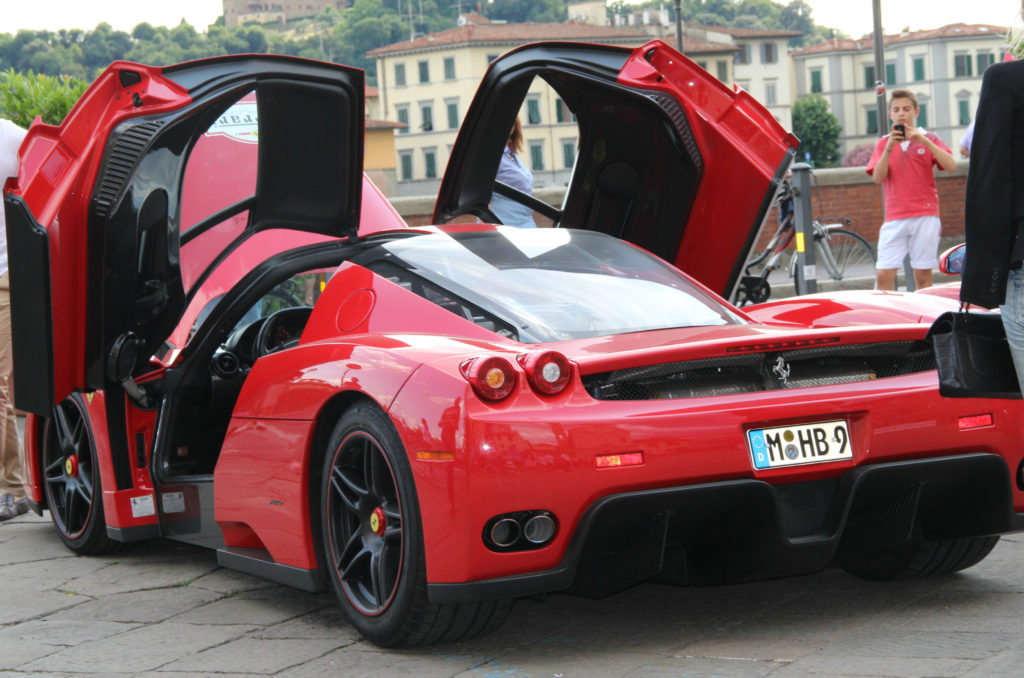

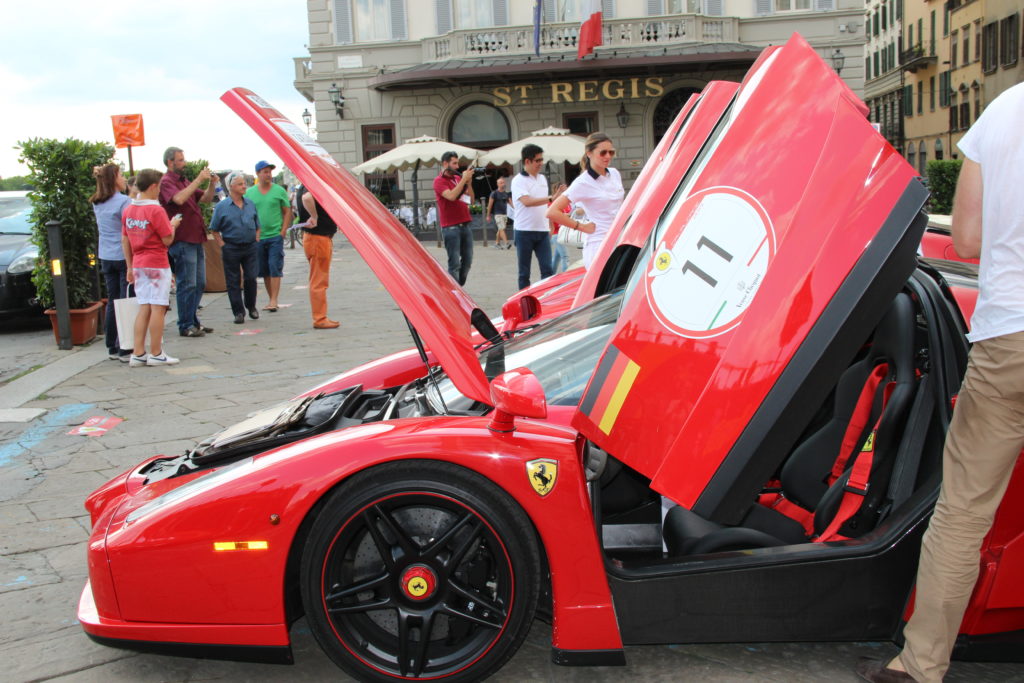
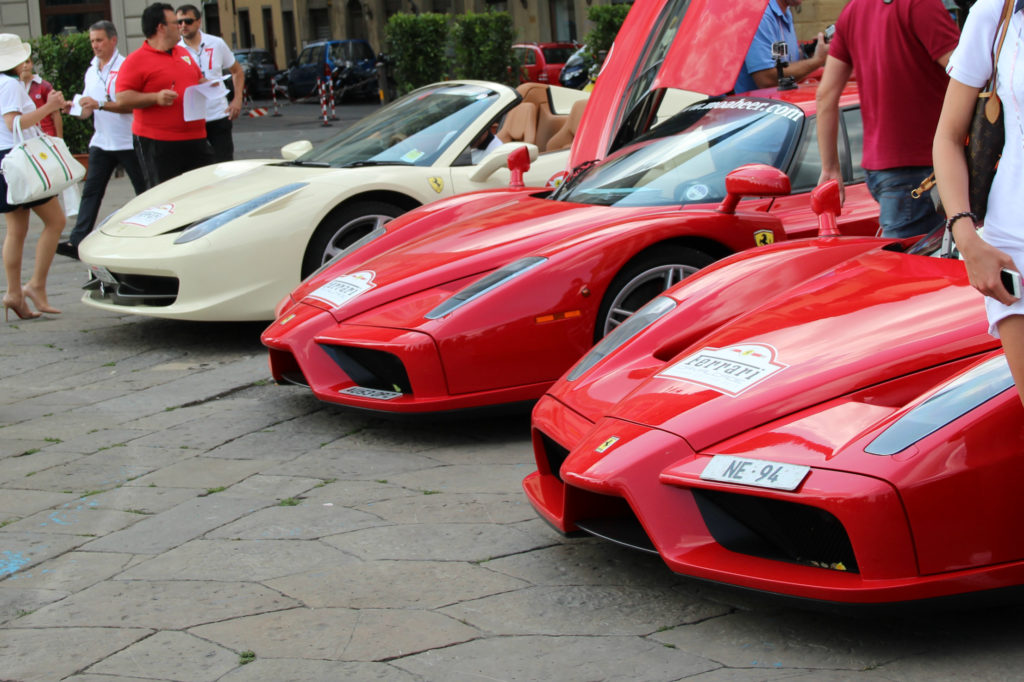
But now onto some of the history. Florence is considered the birthplace of the Renaissance. Florence has many museums and art galleries such as the Uffizi Gallery and the Pitti Palace. The Uffizi Gallery originally served as the administrative offices for Florence but is now an art museum. One of the last heiresses of the Medici Family arranged for all of the family’s art to remain in Florence. Most of it is at the Uffizi which is one of the first modern museums. It has been open the public since 1765. The first picture is one of the Uffizi Gallery.
The Arno River runs through the city which led to it being a commercial center. The next picture is of the Arno River. Florence is thought to be one of the world’s most beautiful cities. The other pictures were taken from our hotel window.
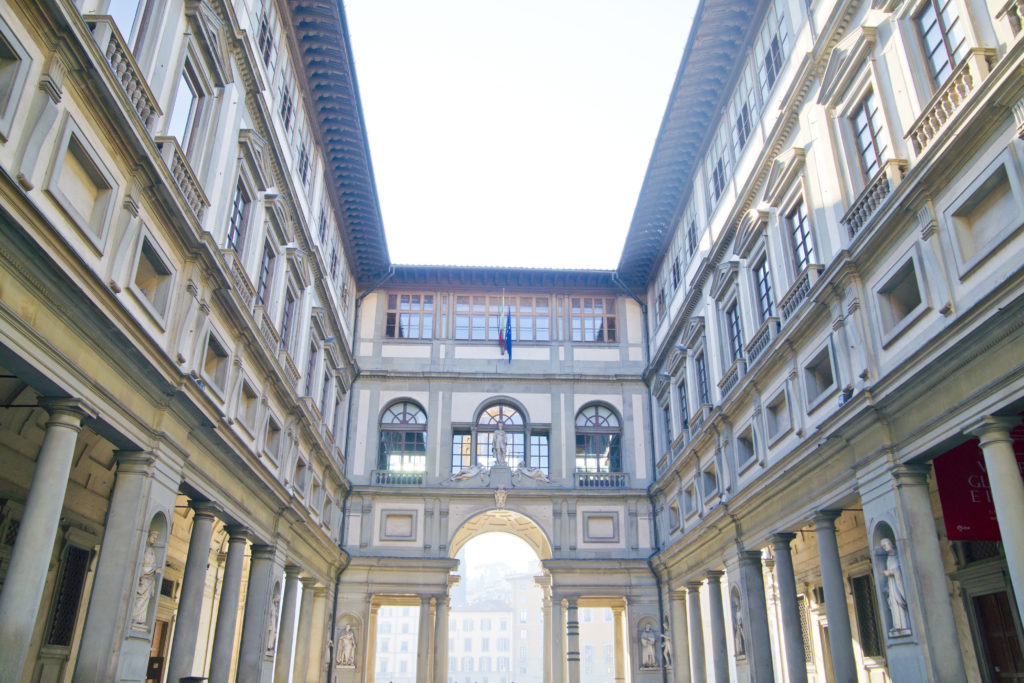


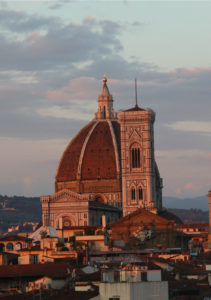
The first picture below is one I purchased and was taken from the Loggia dei Lanzi looking out at the Piazza della Signoria. The Piazza is also outside the Palazzo Vecchio or the City Hall of Florence. A copy of Michelangelo’s David stands outside City Hall. It was placed here in 1910. The original David stood here from 1504 until 1873 when it was moved to the Accademia Gallery.
The Loggia and Piazza hold many statues, some of which are pictured here. First is the copy of Michelangelo’s David. Another statue, Hercules and Cacus, stand on the other side of the entrance to the Palazzo Vecchio. The statue had political meaning. Hercules killed Cacus, a dragon. Hercules seems to wait before killing the dragon. The political meaning is that the Medici would show mercy to those who conceded to their power but not to those who opposed them.
This is followed by the Rape of the Sabine Women. It was made from one block of marble and has been in the Loggia since 1583. The word rape may refer to an abduction rather than the meaning we currently associate with it.
The next statue is one of the Medici lions which are on the steps of the Loggia. One was sculpted in the 2nd Century and the other in the 16th Century (I don’t know which one I photographed). They have been displayed here since 1789.
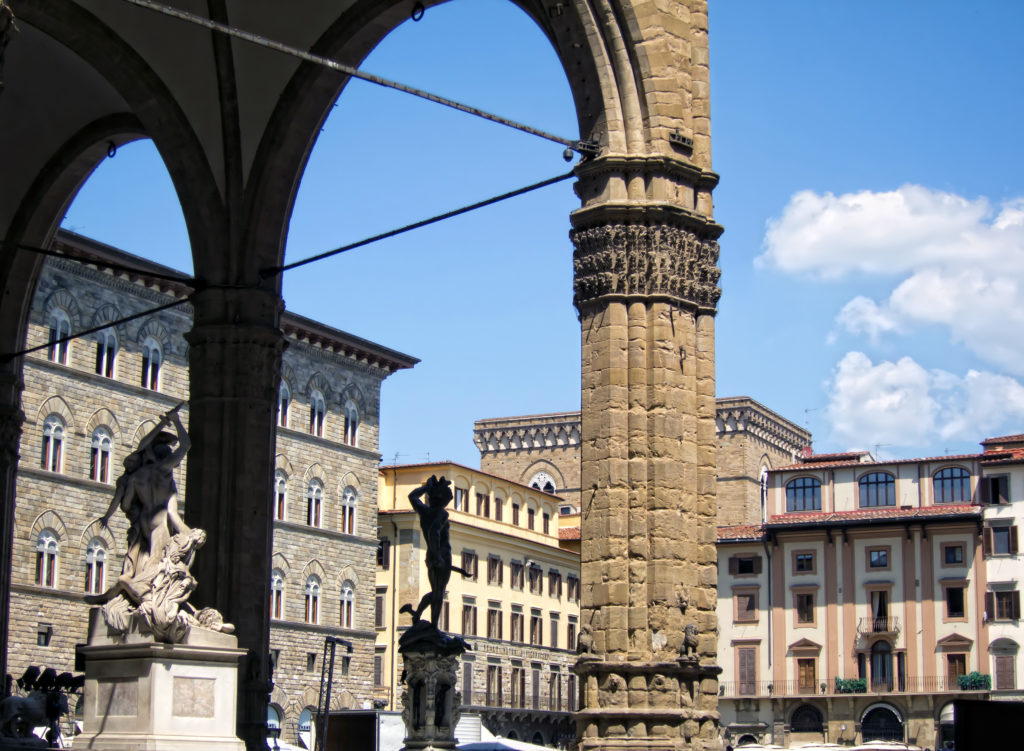
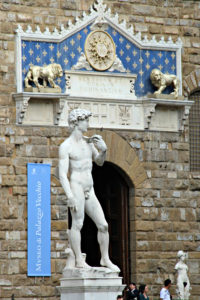

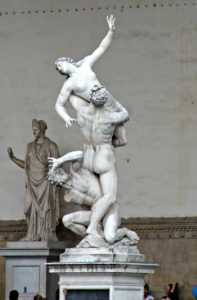
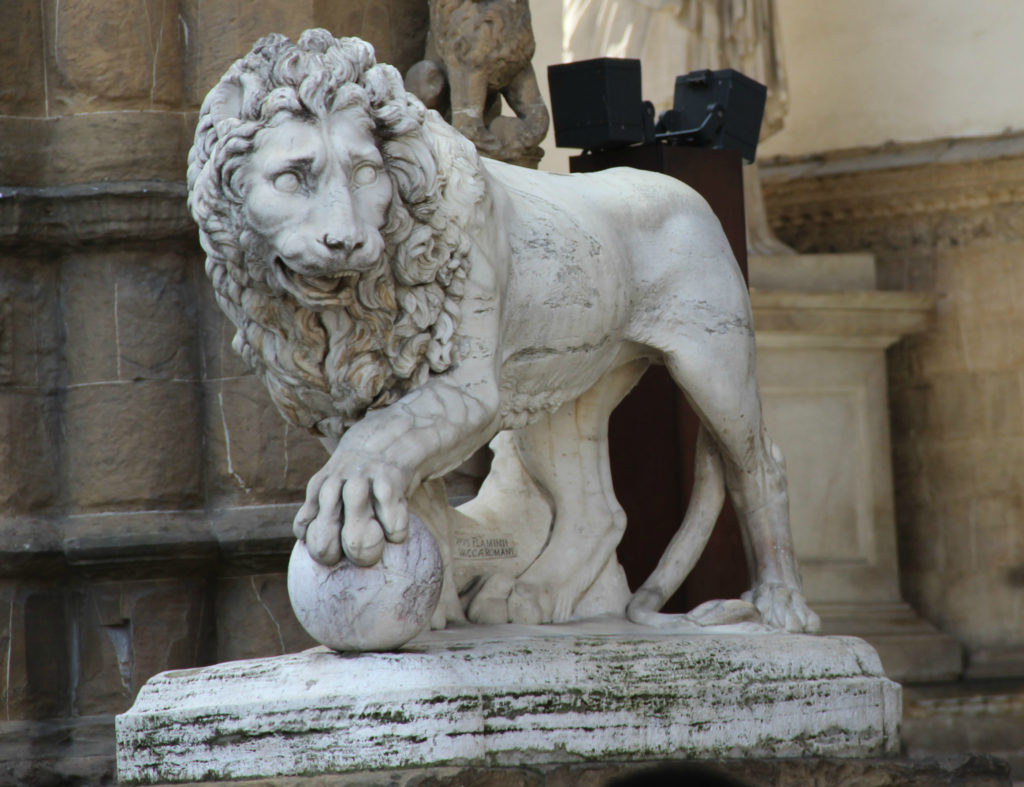
These are pictures of the Palazzo Vecchio, the City Hall of Florence. It also served as the City Hall for the medieval Republic of Florence. In 1299, the people decided to build a palace to provide protection for the magistrates. A clock tower was added in 1667. The building is made of stone. Under the arches are painted coats of arms of the Florentine Republic. Some of the arches were designed for dropping heated liquid or rocks on invaders.

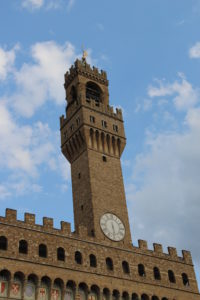
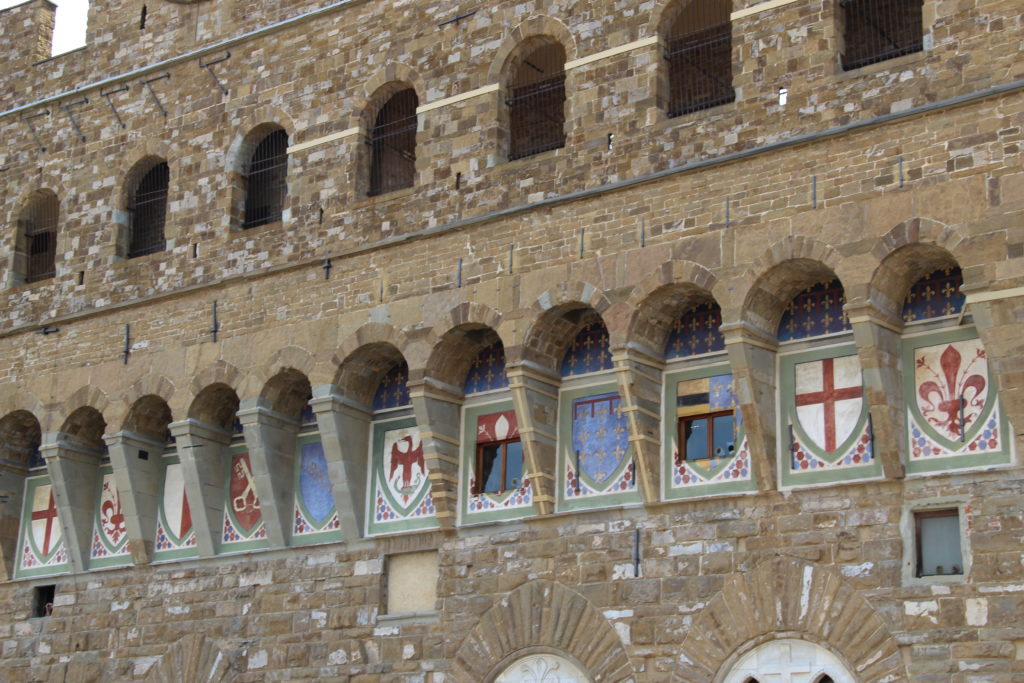
Another piaza is the Piazza del Mercato Nuovo. It is famous for a bronze statue of wild boar. It is a symbol of Tuscany. Legend says that if you put your hand in the boar’s head and wish to return to Florence, you will. If you don’t wish to return, the boar will bite you. The Piazza is an open air market frequented by both tourists and residents. Leather goods are commonly sold here.
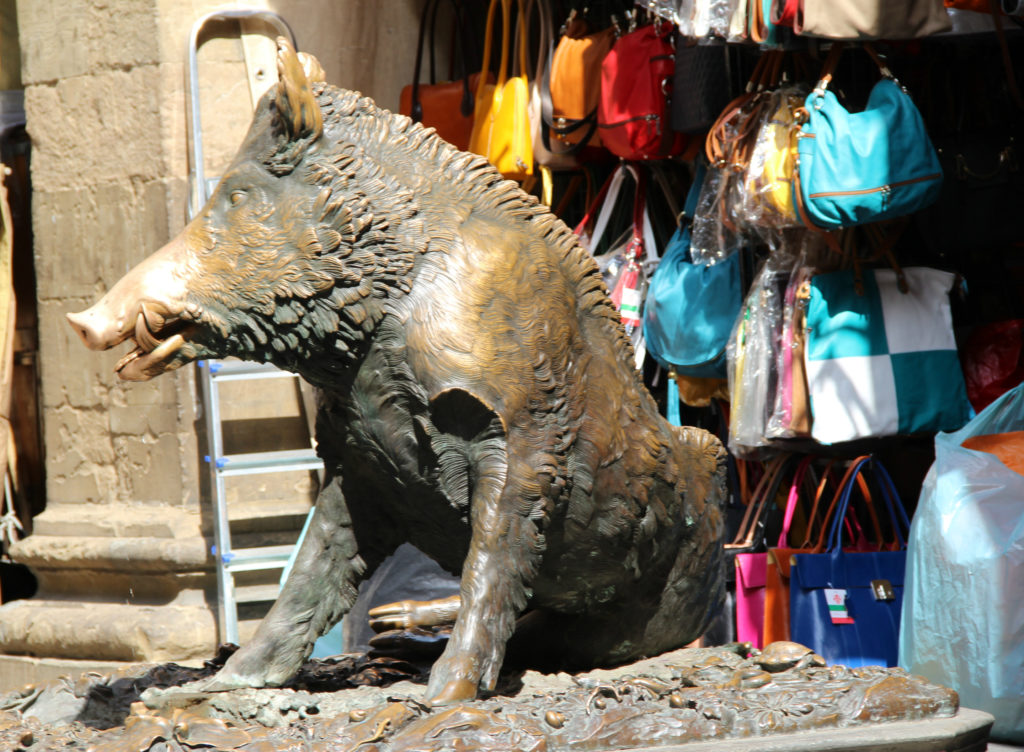

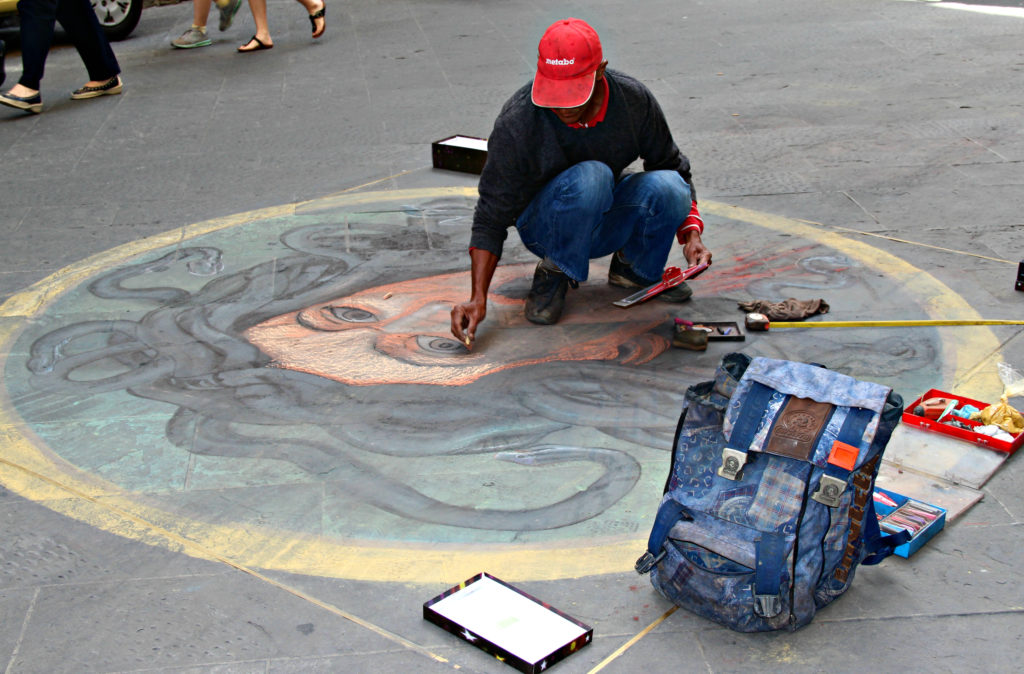
This is the Ponte Vecchio, a stone bridge over the Arno River. It was built in 1345 and had a private corridor for the Medici Family that was over the shops. It connected the Medici Palace with the Uffizi which was where the administrative offices were located. Originally, there were butchers and blacksmiths in these shops, but in 1593, the Medici Grand Duke Ferdinand decided there was too much smell. The shops were replaced with jewelry shops, etc. These type of shops have occupied the bridge ever since. During World War II, most bridges in Florence were destroyed by the Nazis, but this bridge was saved – supposedly by order of Hitler.
